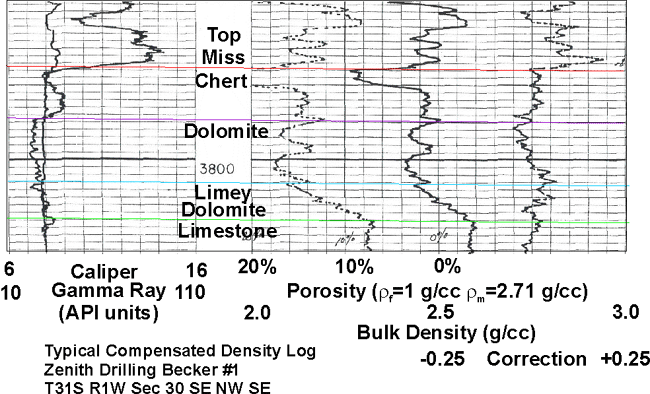 |
|
Kansas Geological Survey Open-file Report 2003-31 |
Wireline Log Interpretation
A major problem in these Mississippian fields is the difficulty in identifying the dolomitic interval on some wireline logs and identifying effective porosity within the dolomitic interval. To identify the dolomitic interval geologic sample logs were correlated with wireline logs to properly identify the productive dolomitic interval.
For most wells, the productive dolomite interval underlying the chert interval is between 10 and 50 ft in thickness. Analysis indicates that where the dolomitic interval is less than 15 feet in thickness porosity is less than 15% and permeabilities are near the lower limit or below values suitable for good reservoir rock.
Chert Interval - Overlying the Mississippian surface is a chert zone ranging in thickness from 8 to 20 ft. Though this zone has been reported to have oil shows, permeability in this chert interval is poor. Electric wireline log analysis and sample descriptions can be interpreted to indicate that this chert zone is unproductive. Though a cross-plot of vertical (kv) and horizontal permeability (kh) in Anson-Bates field indicates that the high kv/kh ratio might allow water injected during a waterflood operation to move into the chert zone, low permeability in the chert zone results in acceptable water loss.

|
|
Last updated July 2003
http://www.kgs.ku.edu/PRS/publication/2003/ofr2003-31/P1-05b.html
